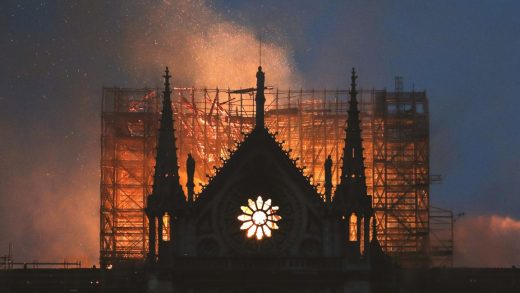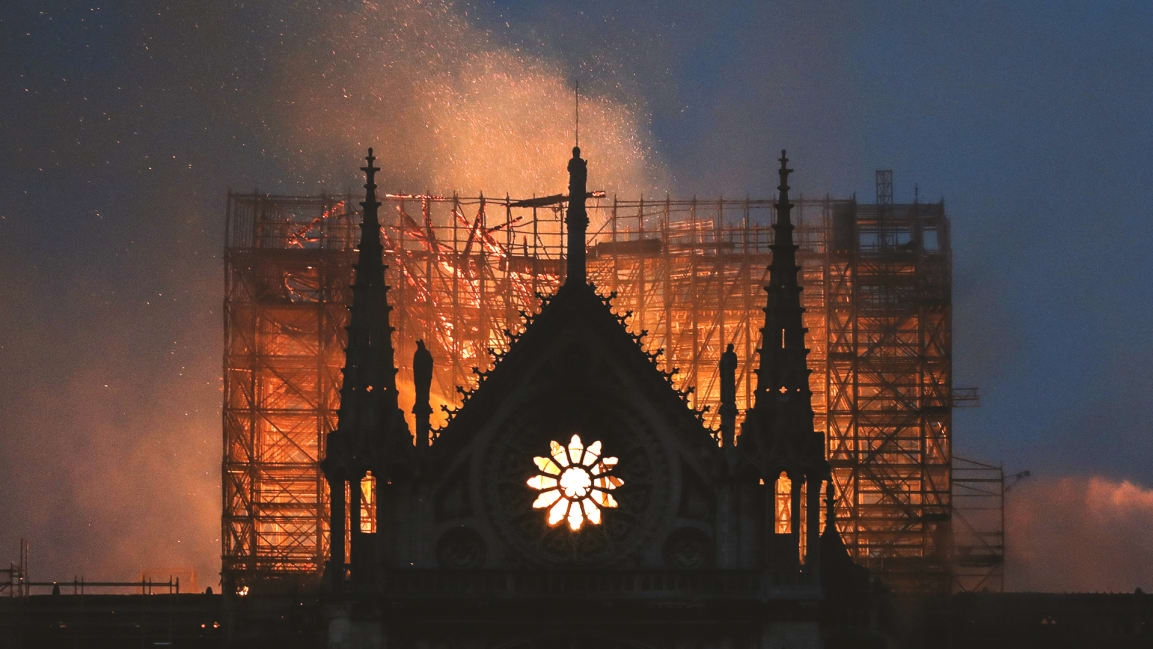Notre-Dame fire: Why historic restorations keep going up in flames
The moment I heard about the inferno at Notre-Dame de Paris (which I’d just visited in January), my first thought was: renovation.
Sadly, I will probably turn out to be right. “Unfortunately, [fire] goes hand in hand with these historic buildings,” says Edward Lewis, who has worked on the restoration of centuries-old timber-frame buildings in the U.K. Historic structures are “tinderboxes,” he says, because they contain wood and other flammable materials that have dried out over decades, or centuries.
It’s too soon to know what caused the Notre-Dame blaze. (The Paris prosecutor is investigating it as an “involuntary destruction by fire.”) But fires like these are often avoidable. “In my experience, it starts with human error, which stems from inadequate supervision levels and disregard for fire prevention procedures,” says Lewis, who is now construction project manager at the University of South Florida St. Petersburg. (Full disclosure: He is also the husband of my colleague Michelle Lewis.)
“On a lot of construction jobs, the ratio between supervisors and workers isn’t adequate enough,” he adds.
“Buildings under construction or renovation are at their most vulnerable and weakest condition,” wrote the U.S. Fire Administration, part of FEMA, in a bulletin published just last month. “Accumulation of waste combustibles, limited access, minimal water supply, and hazardous operations increase the challenge.”
Constant vigilance
While old structures are highly flammable, restoration work often requires open flame for things like soldering pipes or metal roofing components. (The Notre-Dame fire appears to have started in the wooden attic, which was surrounded in scaffolding.)
“Whenever you have somebody who’s using any kind of a blowtorch or a welding torch . . . there’s the risk for bits of hot molten metal to drop down into a concealed space,” says Gerry Tierney, associate principal in the San Francisco office of architecture and design firm Perkins+Will. He works on renovations as well as new construction, and says that fire is a constant danger in both cases–although higher in older buildings because “the timbers are well seasoned.”
“You don’t necessarily have to have a naked flame,” adds Lewis. “Sometimes it’s just induction heat.”
The heat of power tools is also a danger. The fire might not even start where the work is happening. Pipes, for instance, can carry heat to another part of the building–perhaps a space inside a wall full of dust.
The big danger, experts say, is that fires can start somewhere out of site–in a wall, under a floor–and smolder for hours before they break out. “You have to have a 24-hour fire watch if there has been any heat-source activity going on,” says Tierney, “because as soon as it breaks out, you’ve got to have somebody trying to get there as fast as possible.”
But there don’t appear to be universal standards for fire watch. “It depends a lot on what the safety manager of a project requires,” says Robert Kornfeld Jr., preservation architect and principal with engineering firm Thornton Tomasetti. He worked on the reconstruction of New York City’s Central Synagogue after it was gutted near the conclusion of a restoration project (by a different firm) in 1998.
A litany of losses
Notre-Dame is sadly just the latest (but perhaps the grandest) victim of fire during renovations. Intrigue and accusations of negligence often surround prominent blazes.
In 1992, much of Windsor Castle in the U.K. was incinerated during restoration work. The Royal Collection Trust pins blame on a spotlight that ignited curtains in Queen Victoria’s Private Chapel. But a rumor abounded within the construction industry that the fire was started by a discarded cigarette.
In 1996, Venice’s La Fenice opera hall burned to the ground, with many people alleging arson. Conspiracy theories assert it was anyone from contractors worried about penalties for falling behind in the work to Mafiosos flexing their muscle.
In 2018, the Art Nouveau Mackintosh Building at the Glasgow School of Art in Scotland was gutted by fire–for the second time in four years. Materials used in a student art project caused the first blaze, in 2014. The second is still under investigation, but critics point out that a promised fire suppression system had not been set up before reconstruction work began. “It’s dramatic to have the Mackintosh School of Arts fire and this [Notre-Dame] fire so close together,” says Kornfeld.
Buildings aren’t the only victims. In 2007, the British Clipper ship Cutty Sark was set ablaze by a vacuum cleaner that restoration crews left on over the weekend. Rank incompetence claimed another ship, the French ocean liner Normandie, over a half-century earlier. In 1942, workers converting the luxury liner into a troop transport were using blowtorches close to piles of highly flammable life preservers. Fire crews poured so much water into the ship that it rolled over in the New York City harbor. The ship was eventually towed away and cut up for scrap.
But other victims of their own restorations have risen again. A rebuilt Windsor Castle reopened in 1997. La Fenice emerged from the ashes like its namesake, The Phoenix, in 2003. The Cutty Sark greeted visitors again in 2012, although it briefly closed in 2014 after a smaller fire.
“This is a significant tragedy,” says Tierney of the Notre-Dame fire, but he’s optimistic for the rebuilding (which French president Emmanuel Macron has already announced.) And he’s certain that rebuilding will follow. “They rebound, and they come back. And that’s part of the tapestry of these great old buildings.”
Hopefully workers will be more diligent when rebuilding the damage that the current restoration project appears to have wreaked.
(48)



